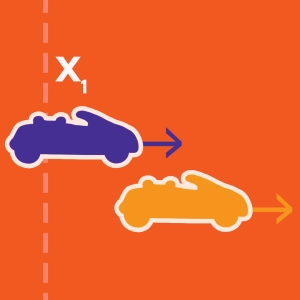 Torque (moment)
Torque (moment)
Learning objectives
- To define the moment (or torque) of a force.
- To illustrate the calculation of a vector product.
- To show the conditions necessary to obtain zero moment.
When a force tends to make an object turn on an axis (around a pivot point) one can define the moment (or torque) of this force in relation to the pivot point.
In Mechanics, the study of the moment of a rotating body is the equivalent of the study of forces for bodies undergoing translation.
The vector moment is a function of the force and the distance seperating the pivot point of the axis from that force (called the lever arm or moment arm – not shown in the animation). The mathematical formula that enables us to determine the moment brings into play the operator vector product (note “X”).
The particularity of the resulting vector moment is that its direction is perpendicular to vectors F and OM (or OQ). Its module depends on the sine of the angle between F and OM. Its strength is thus maximal for an angle of 90° and zero when the direction of the force passes along the axis.
The term torque is associated with a system of two forces where the resultant is zero (one pushes while the other pulls) but where the moment is not zero. In this example, one can speak of a couple if one force F’ of the same amplitude but opposite in direction, was applied to the other pedal.

Discover EduMedia for free
The interactive encyclopedia that brings science and math to life in the classroom.
Over 1,000 resources





